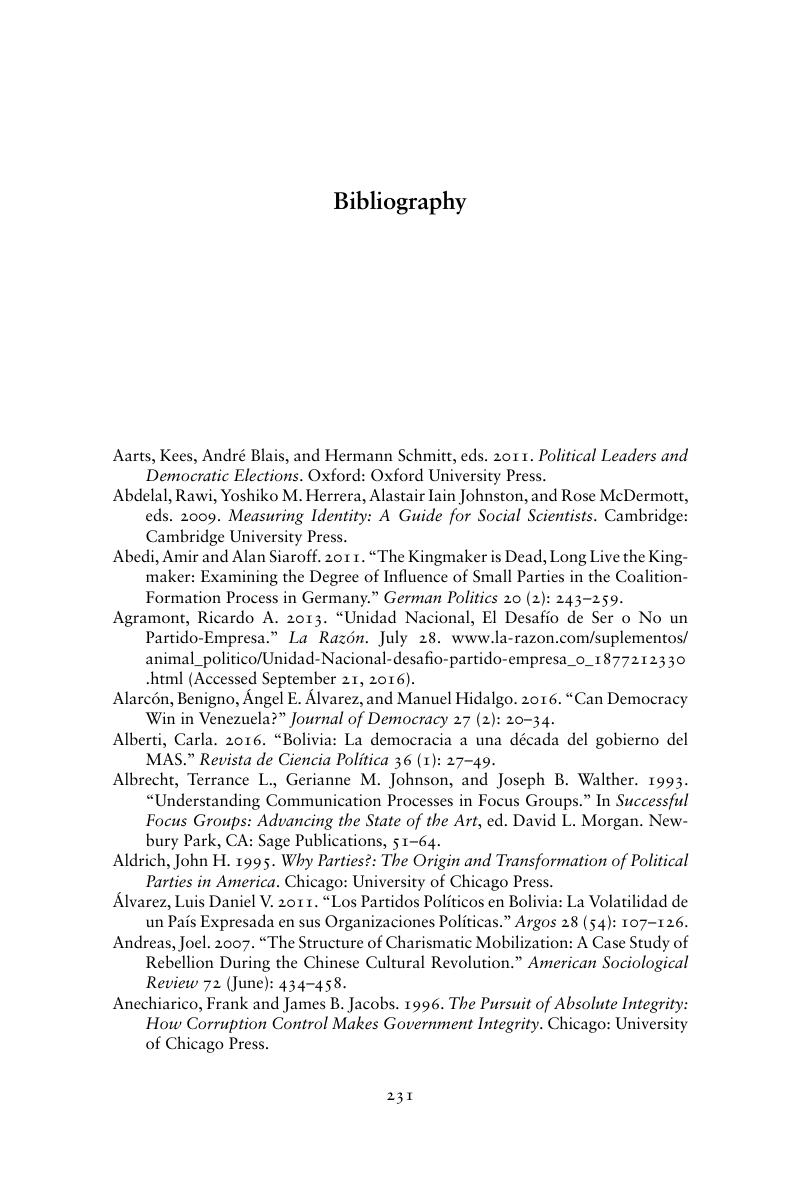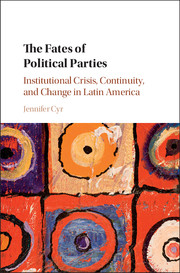Book contents
- The Fates of Political Parties
- The Fates of Political Parties
- Copyright page
- Contents
- Tables
- Figures
- Acknowledgments
- 1 Introduction
- 2 Political Parties and Their Resources
- 3 Explaining the Fates of Parties
- 4 The Resource Wealth of Parties after Party-System Collapse
- 5 Survival and Revival in an Atomized Party System
- 6 Survival and Revival in a Regionalized Party System
- 7 The Difficulties of Survival and Revival in a Hyper-Fluid Party System
- 8 Conclusion
- Book part
- Focus Group Questionnaires Demographic Questionnaire (in English and Spanish)
- Bibliography
- Index
- References
Bibliography
Published online by Cambridge University Press: 04 July 2017
- The Fates of Political Parties
- The Fates of Political Parties
- Copyright page
- Contents
- Tables
- Figures
- Acknowledgments
- 1 Introduction
- 2 Political Parties and Their Resources
- 3 Explaining the Fates of Parties
- 4 The Resource Wealth of Parties after Party-System Collapse
- 5 Survival and Revival in an Atomized Party System
- 6 Survival and Revival in a Regionalized Party System
- 7 The Difficulties of Survival and Revival in a Hyper-Fluid Party System
- 8 Conclusion
- Book part
- Focus Group Questionnaires Demographic Questionnaire (in English and Spanish)
- Bibliography
- Index
- References
Summary

- Type
- Chapter
- Information
- The Fates of Political PartiesInstitutional Crisis, Continuity, and Change in Latin America, pp. 231 - 260Publisher: Cambridge University PressPrint publication year: 2017



